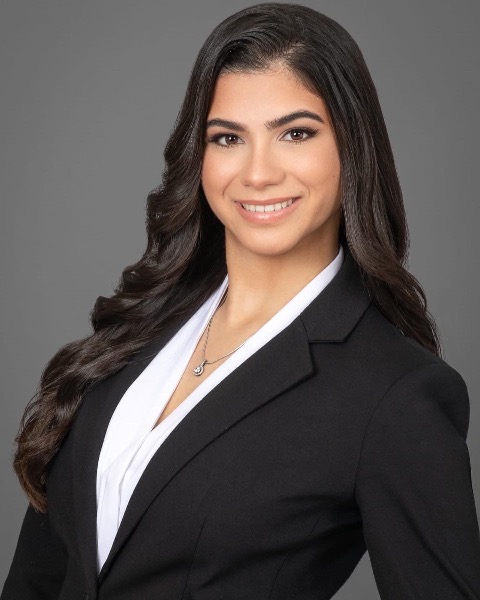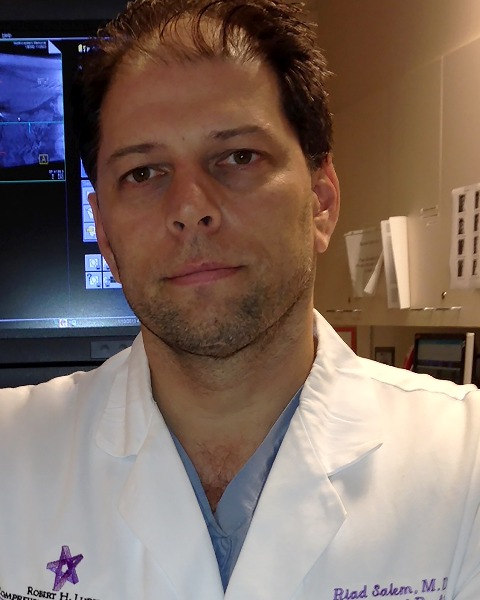SIR 2025
Interventional Oncology
Scientific Session
Awards
Abstracts of the Year
Preliminary Results of the FRONTIER Trial: Safety and Feasibility of Yttrium-90 TheraSphere in Recurrent Glioblastoma
- SM
Samdeep Mouli, MD, FSIR
Associate Professor
Northwestern University Feinberg School of Medicine, United States 
Delmarie M. Rivera-Rodriguez, MD (she/her/hers)
Medical Student
Northwestern Memorial Hospital, Universidad Central del Caribe School of Medicine, United States- SA
Sameer A. Ansari, MD, PhD
Professor of Radiology, Neurology, Neurological Surgery
Northwestern Medicine, United States - MT
Matthew Tate, MD, PhD
Neurosurgeon / Associate Professor
Northwestern Memorial Hospital, United States - RL
Rimas Lukas, MD
Neuro-oncologist / Associate Professor
Northwestern Memorial Hospital, United States - JW
Jonathan Weinstein, MD
Interventional Radiologist
Northwell Health, United States - YS
Yafell Serulle, MD, PhD
Interventional Neuroradiologist
Lenox Hill Hospital, United States - JB
John Boockvar, MD
Neurosurgeon
Lenox Hill Hospital, United States - KN
Kazim Narsinh, MD
Interventional Neuroradiologist
University of California San Francisco, United States - NB
Nicholas Butowski, MD
Neuro-oncologist
University of California San Francisco, United States - MD
Matthew Dreher, Ph.D
Vice President
Boston Scientific, United States - RS
Roger Stupp, MD
Professor, Neurological Surgery
Northwestern Medicine, United States 
Riad Salem, MD
Chief of Vascular and Interventional Radiology in the Department of Radiology
Northwestern Memorial Hospital, United States
Presenting Author(s)
Author/Co-author(s)
Glioblastoma (GBM) is a highly aggressive brain tumor with poor prognosis, particularly in recurrent cases where treatments are limited. Yttrium-90 (Y90) microsphere therapy, successfully used for hepatic malignancies, offers the potential for targeted radiation in GBM. The FRONTIER trial evaluates the safety and feasibility of TheraSphere GBM Y90-microsphere treatment, in patients with recurrent GBM.
Materials and Methods:
The FRONTIER trial is a prospective, single-arm, multi-center (IDE) study investigating TheraSphere GBM in up to 12 patients with recurrent GBM across 5 US sites. The primary endpoint is the incidence of treatment-related toxicities, with secondary endpoints assessing technical success and efficacy. To date, eight subjects (50% female) with recurrent GBM in the non-dominant hemisphere have been enrolled, with the first 6 patients reported herein, with an average age of 60±4.81 years,. The treatment region, defined using cerebral angiography-MRI fusion to encompass the recurrent lesion while excluding eloquent areas, was targeted with a dose of 40±4Gy. Post-treatment evaluations include MRI for assessing acute effects, Y90-PET for dose distribution, and neurological assessments. Changes in post-contrast T1-weighted (T1w) enhancing tissue volume (T1wvol) are analyzed longitudinally.
Results:
All patients tolerated the procedure well with no limiting toxicities reported through 30 days, including cerebral ischemia or hemorrhage. Post-treatment imaging showed a mean absorbed dose of 42.1±2.4 Gy to the treatment region (mean treatment region volume 75.1±17.5 cc), confirming technical feasibility. The mean tumor absorbed dose was 65.1±22.6 Gy, likely due to preferential tumor perfusion. At 2 months, 4/6 patients exhibited reduced T1wvol, while 2 showed increased volumes. Disease progression was more rapid outside the treated area. Two patients received subsequent surgery at 82 and 120 days post-Y90 treatment.
Conclusion:
These preliminary FRONTIER trial’s results indicate that TheraSphere GBM is technically feasible and well-tolerated, with no significant toxicities observed through 30 days. These findings support further investigation into Y90 microsphere therapy as a potential treatment for recurrent GBM.


.jpg)